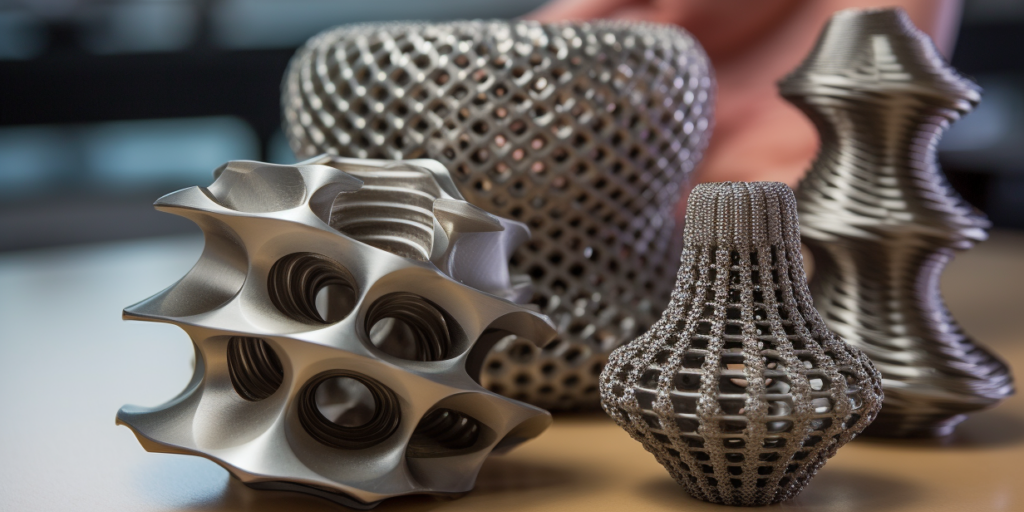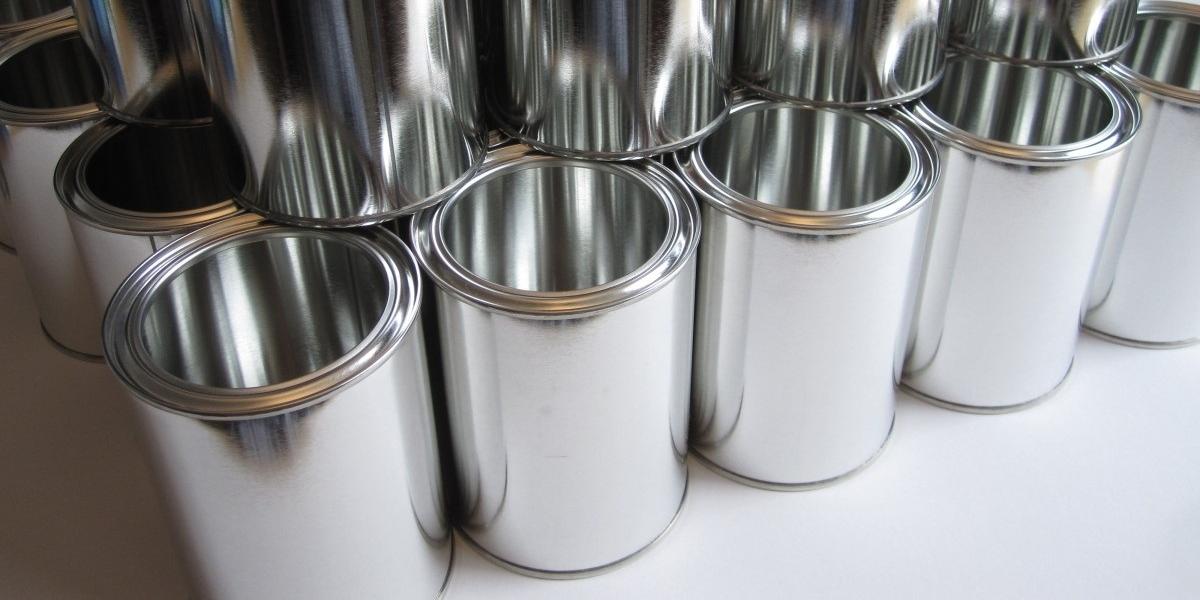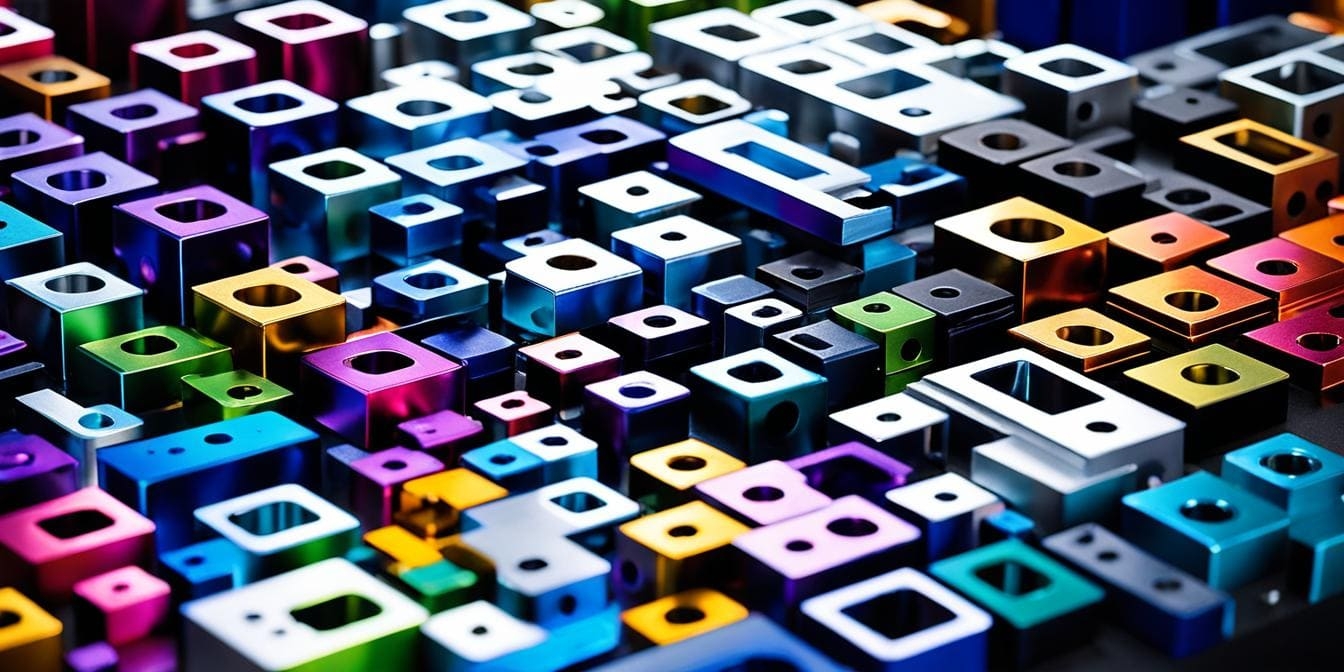Welcome to the King of Fighters Contest of Manufacturing. Today is a crucial battle in the CNC weight class by Laser Cutting vs Plasma Cutting!
Following this article, let’s find out how to distinguish these two technologies, their strength and weaknesses in each aspect, and which cutting machine is right for you.
Plasma vs Laser: How to Distinguish Them?
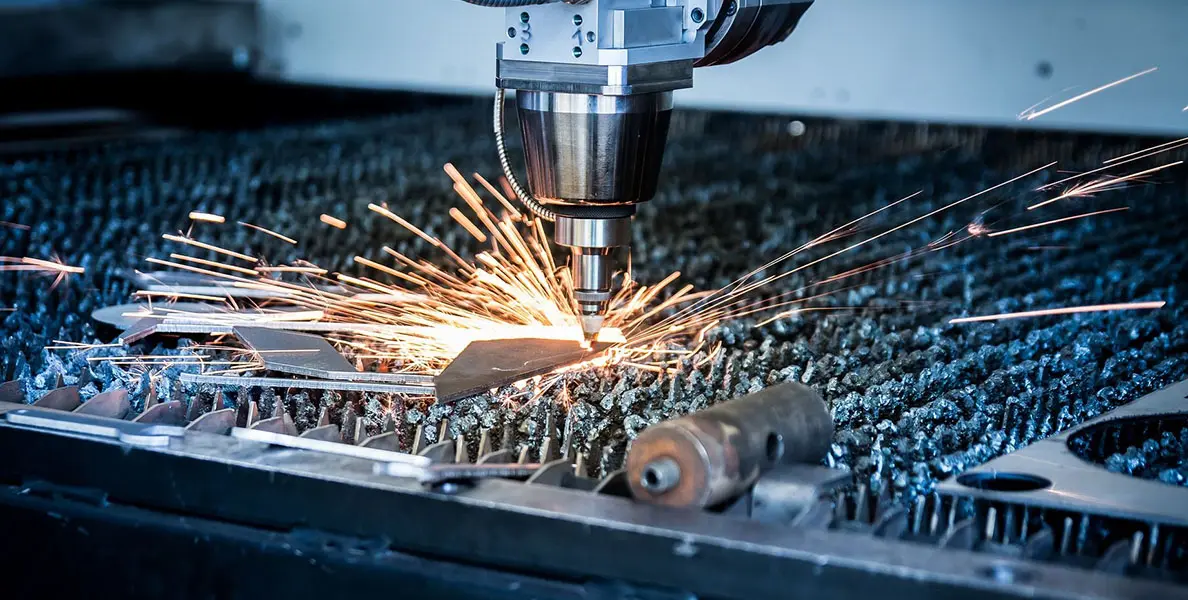
Some esteemed readers have stated in prior comments and inquiries concerning CNC machining techniques that both cuttings have somewhat similar appearances and are hard to tell apart.
In this part, I’ll compare plasma and laser cutting, explain what they are, and show you their key differences.
Brief Overview of Laser Cutting and Plasma Cutting
I should note right away that both of them are popular techniques employed to accurately and precisely cut through a variety of materials.
The images of them in work may look fairly similar (because both entail high temperatures, heat, and sparks), but their fundamental cutting process is completely different.
Laser Cutting
In this method, the laser cutting machine uses a high-powered laser beam to melt, burn, or vaporize the material being cut, often used for cutting metals, plastics, wood, and other materials that require a precise and clean cut.
In the process, the beam is focused and directed through a nozzle onto the material, creating a narrow and intense heat source that is capable of cutting through metal(or even thicker materials) quickly and efficiently, and eventually creates clean and accurate cuts.
Plasma Cutting
In this method, the plasma machine uses a plasma torch to cut through materials by blowing an ionized gas at high speeds. The gas heats up to an extremely high temperature and creates a high-velocity jet of ionized gas known as plasma, which is then used to melt and blow away the material being cut.
This technology is often used for cutting metal sheets, pipes, and other materials that require a fast and precise cut. It’s a cost-effective method for cutting through thick materials and is often used in industrial applications where high cutting speeds are required.
Differences between laser and Plasma
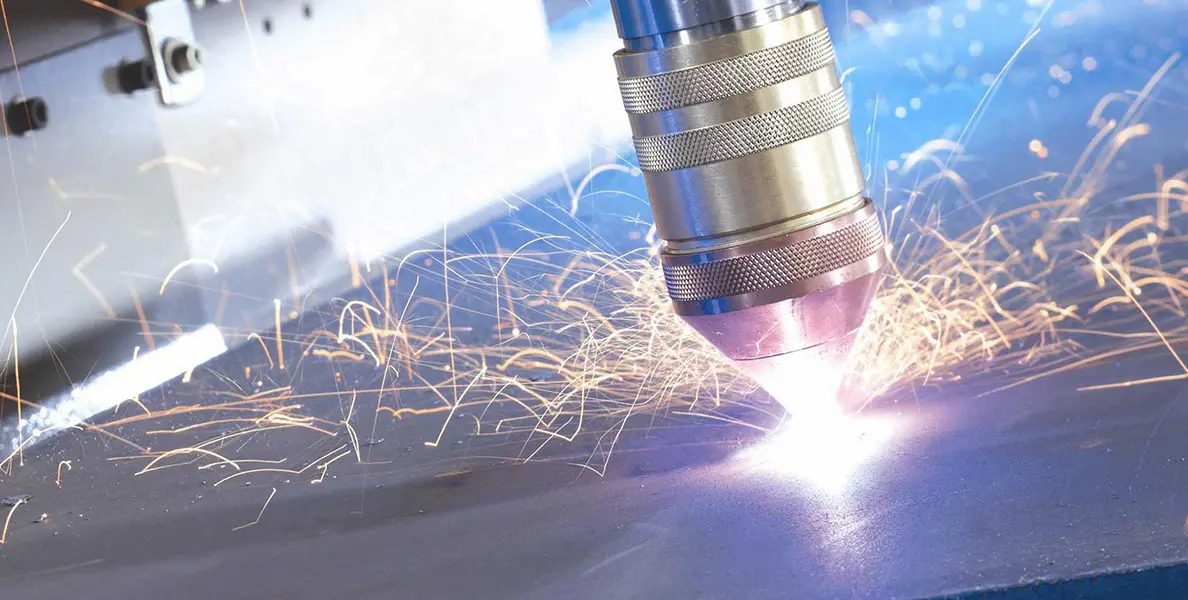
The main differences between laser cutter and plasma cutter lie in the technology used, the quality of the cut, the thickness of materials that can be cut, cost, and endurance.
In the world of manufacturing, you will arrive at entirely different findings with different criteria.
| Cutting/ Attributes | Laser | Plasma |
| Technology Used |
high-powered laser beam | a high-velocity stream of ionized gas |
| Working Principle | uses a beam to melt, burn, or vaporize heat source on the material | transfer high-temperature ionized gas to a plasma torch and cut through material |
| Regular Used materials | metals, plastics, wood, and other materials require precise and clean cuts | Metal sheets, Pipes, and other materials require fast and precise cuts |
| Thickness requirement | Thinner material | Thick material |
| Quality of Cutting Edges | cleaner less material distortion | Rougher |
| Material Distortion | Less | More |
| Cost | More expensive | Cheaper |
| Endurance | Longer | Shorter |
Laser Cutting vs Plasma Cutting: Strengths and Weaknesses
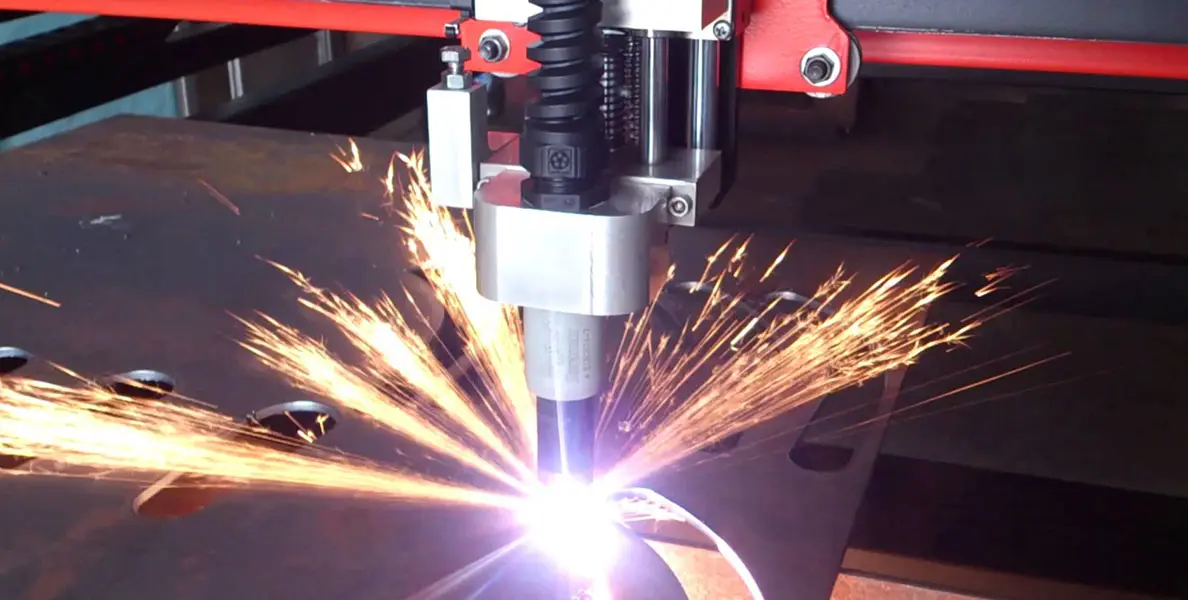
I believe our esteemed reader already understands that these two method’s different from each other.
In this part, we’ll dive further into multiple aspects, trying to figure out the advantages and limitations of these two technologies in each aspect.
Cost Comparison
When it comes to cost comparison between Laser Cutting and Plasma Cutting, several factors need to be considered.
Firstly, the initial investment required for a Laser CNC machine(you might wanna install a fiber laser system as well) is typically higher than for a Plasma cutter.
However, Laser cuts may be more cost-effective in the long run due to lower operating costs and higher precision. Additionally, the cost per cut may be lower with Laser as it produces cleaner edges, reducing the need for post-processing.
On the other hand, a Plasma cutter is often faster and more suitable for cutting thicker materials, which may make it more cost-effective for certain applications.
| Cutting/ Factor | Laser | Plasma |
| Initial Investment | More Expensive | More affordable |
| Maintenance and Consumption | Requires less | Requires more |
| Long run cost | Lower | Higher |
Accuracy and Precision comparison
When comparing the accuracy and precision of these two technologies, it is important to consider the specific needs of the project at hand.
Laser Cut is known for its high level of accuracy, as it uses a concentrated beam of light to make extremely precise cuts. This makes it ideal for projects that require intricate details and tight tolerances.
On the other hand, Plasma is a faster method that is better suited for projects that require speed over meticulous precision. While Plasma may not offer the same level of accuracy, it is still a highly effective method for cutting through a variety of materials, especially those with high thickness.
| Cutting/ Factor | Laser | Plasma |
| Precision | High level | Relatively lower |
| Cutting Tolerance | Very Tight | Relatively Loose |
| Accuracy | Extremely high | Relatively lower |
| Material Dependence | High flexibility, especially works for thinner material | Suits for multiple materials, especially thick and large ones. |
| Distortion | Less | More |
Cutting Machine Speed Comparison
When it comes to Laser versus Plasma, one of the key factors that sets them apart is their speed.
In general, Plasma Cutting tends to be faster when it comes to cutting through thicker materials. This is because the intense heat generated by the plasma arc in the Plasma Cutting machine can more easily melt through and finish the metal cutting quickly.
On the other hand, Laser Cutting works faster when it comes to cutting through thinner materials with high precision. The focused cutting tool can quickly and accurately cut through thin materials without causing any damage or warping.
| Cutting/ Factor | Laser | Plasma |
| When Cutting Thick Material | Slower | Faster |
| When Cutting Thinner Material | Faster | Slower |
| With High Precision Cutting | Faster | Slower |
| With Low Precision Cutting | Slower | Faster |
Versatility Comparison
When it comes to versatility, since both technologies offer unique advantages and capabilities, the choice between them ultimately depends on the specific requirements of the project and the desired outcome.
Laser cutting is known for its precision and ability to cut intricate designs with extremely fine detail. It is often used for applications that require high accuracy and clean edges.
On the other hand, plasma cutting is better suited for cutting through thicker materials, such as metal plates or pipes. Its ability to quickly and efficiently cut through a wide range of materials makes it a popular choice for industrial applications with tight deadlines.
| Cutting/ Factor | Laser | Plasma |
| Material Adaptability | Can cut through a wide range of materials | Excellent in dealing with larger or thicker materials |
| Dealing Details | allowing intricate designs and complex shapes | Excellent projects don’t require high precision and complex details |
| Suitable Area | creating detailed and precise cuts with high accuracy | Jobs with tight deadlines requires speed and efficiency |
Laser versus Plasma: Respective Applications in Industry
In addition to their different strengths and weaknesses, these two technologies have industrial uses. And I must reiterate that there are advantages and disadvantages to both plasma and laser cutting. They are not fundamentally superior or inferior, only have differing adaptability in specific industrial fields.
Application of CNC Laser Cutter in Industry
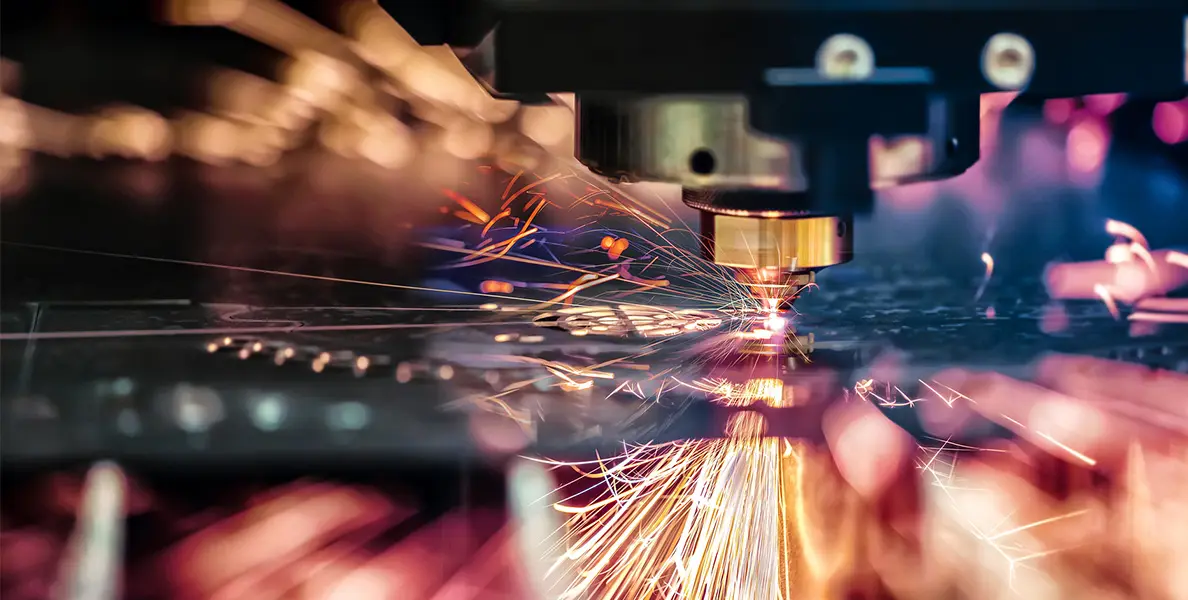
Laser-cutting technology has revolutionized the manufacturing industry with its precision and efficiency, especially performing well in the automotive, aerospace, and electronics industries.
In the automotive sector, this technology is used to cut complex shapes and patterns in metal sheets for car bodies and other components. The high level of accuracy and speed of laser cutting makes it an ideal choice for manufacturers looking to optimize their production processes.
In the aerospace industry, it’s essential for cutting intricate components from materials like titanium and composites. The clean cuts and minimal heat-affected zones achieved with laser cutting ensure the structural integrity of the parts.
When manufacturing electronic devices, laser cutting is used to precision-cut delicate components like circuit boards and sensors. The ability to cut intricate patterns with minimal distortion is crucial for ensuring the functionality and reliability of electronic devices.
| Application of Laser Cutting in Industry |
| Industrial Field | Use | Capability Involved | Products Example |
| Automotive | Cut complex shapes and patterns in metal sheets | High accuracy and speed | Car bodies |
| Aerospace | Cutting intricate components from materials | Make intricate components with complex shapes | Microparts in the engine |
| Electronic Devices | Precision-cut delicate components | Cut intricate patterns with minimal distortion | Circuit boards and Sensors |
Application of CNC Plasma Cutter in Industry
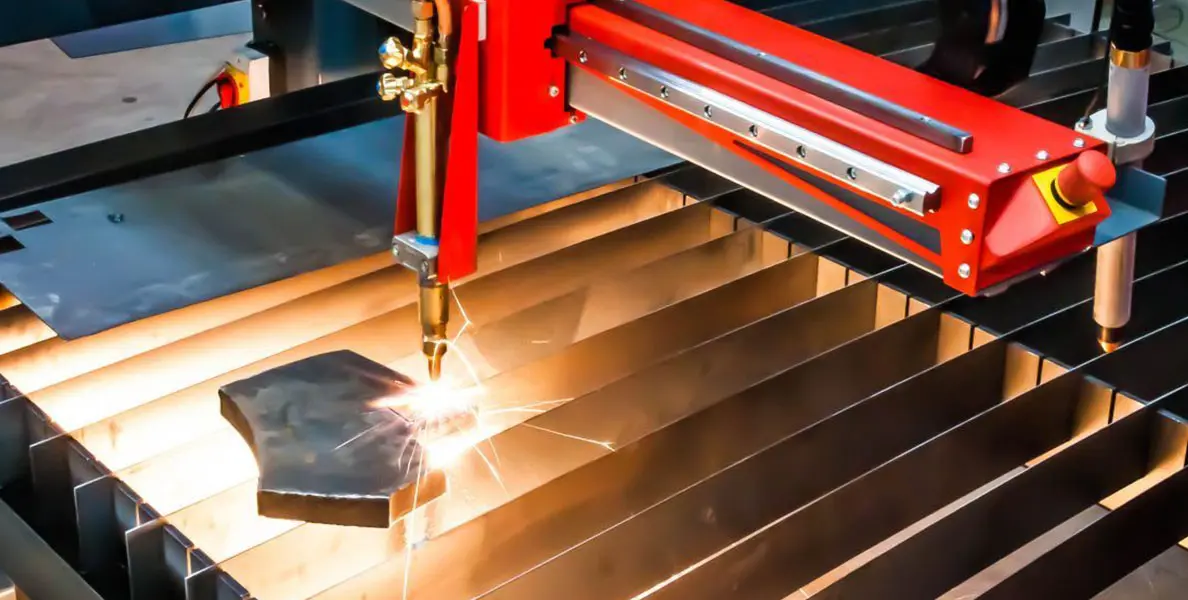
Plasma cutting is widely used in various industries for its versatility and efficiency, including shipbuilding, metal fabrication, and construction.
In the shipping industry, this technology is commonly used for cutting through thick metal plates to construct ship components such as hulls and decks. The speed and precision make it ideal for handling the large-scale cutting required in shipbuilding.
In the field of metal fabrication, it’s valued for its ability to cut through a wide range of metals and versatility to create a variety of components and structures. It plays a crucial role in the manufacturing of products ranging from machinery parts to architectural elements.
In construction, the ability to make clean and durability cut through thick materials makes plasma cutting a valuable tool in the construction industry. From steel beams for skyscrapers to shaping metal panels for building facades, plasma cutting plays a crucial role in modern construction practices.
| Application of Plasma Cutting in Industry |
| Industrial Field | Use | Capability involved | Products example |
| Shipping | Cutting through thick metal plates to construct ship components | Precision and speed | Hulls and Decks |
| Metalwork Fabrication | Product variety of components | Cut through a wide range of materials | Machinery parts and Architectural elements |
| Construction | Make clean and long durability parts | Cut through thick materials | Steel beams and shaping Metal panels |
Conclusion: Plasma or Laser?
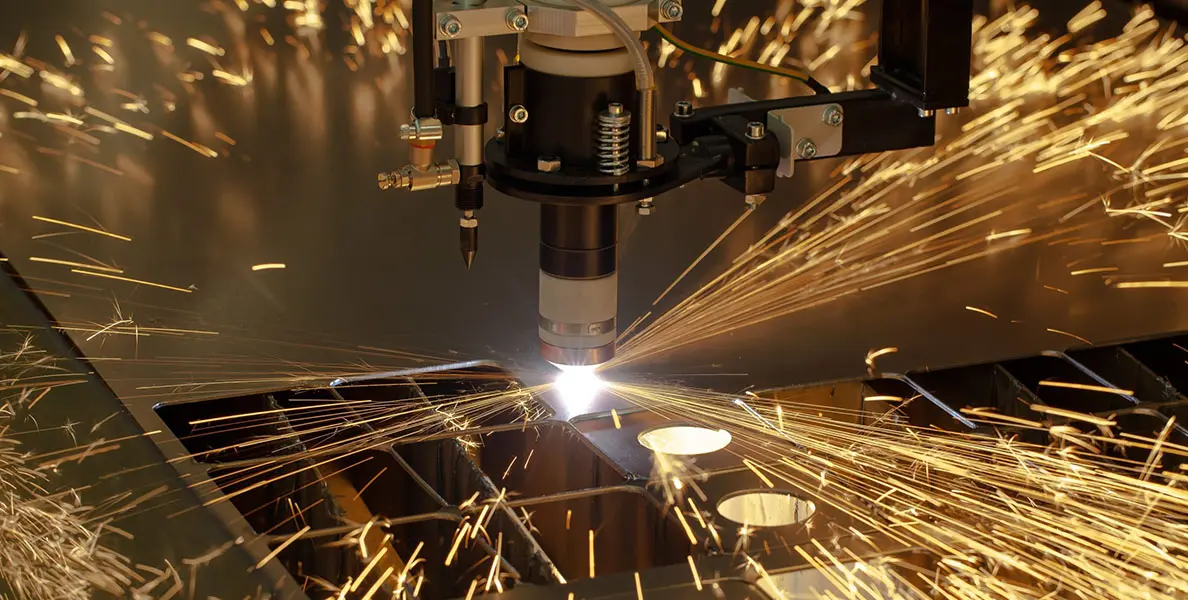
To sum up, Plasma cutting and laser cutting are both highly efficient methods for cutting through various materials, but their working principle are different, and some key differences that set them apart. They have different performances in cost, versatility, speed, precision field, and respective applications in the industry. Manufacturers should choose the best cutting equipment for them based on specific needs.
XMAKE in Laser and Plasma Cutting
Whether laser or plasma cutting, XMAKE has rich experience and advanced technology. If our esteemed readers have needs in either of them, you can leave it to us.
Frequently Asked Questions:
Q1: Can both cutting be done using CNC machines?
A: Yes, both cutting methods can be done using CNC (Computer Numerical Control) machines for automated precision.
Q2: Are there limitations to the types of metals that can be cut with laser and plasma cutting machines?
A: Laser cutting is more suitable for non-conductive metals like stainless steel and aluminum, while plasma is effective for conductive ones like steel.
Q3: What factors should I consider when comparing plasma cutting and laser cutting for a specific project?
A: Consider the material thickness, desired precision, production speed, and budget constraints when deciding between plasma and laser cutters.
Q4: How do CNC plasma and CNC laser machines compare in terms of speed?
A: CNC plasma cutting machines are typically faster at cutting through thicker materials, while CNC laser machines are faster at cutting thin materials with high precision.
Q5: How does a fiber laser differ from a CO2 laser?
A: Fiber lasers are more efficient and have higher cutting speeds compared to CO2 lasers, making them suitable for cutting thin to medium materials.
Q6: What is a cutting slot in laser cutting?
A: A cutting slot refers to the narrow path created by the beam as it cuts through the material, allowing for precise cuts and minimal material wastage.
References
- Comparison of the advantages and disadvantages of CNC plasma cutting machine and CNC laser cutting machine_Kunshan Weisi Machinery Co., Ltd. (n.d.). http://www.kswestern.cn/news/485.html
-
Plasma CNC cutting machine – fiber laser cutting machine core cf (laser fiber cutting). (n.d.). https://zb.szxhyh.com/post/28230.html
-
What is the difference between a laser cutting machine and a CNC plasma cutting machine [Wuhan Huayucheng CNC]? (n.d.). http://158cnc.com/show-37-933-1.html
-
Laser cutting machine VS plasma cutting comprehensive comparison [CNC cutting machine] CNC flame cutting machine | CNC plasma cutting machine | Gantry CNC cutting machine manufacturer | Wuhan Huayucheng CNC. (n.d.). http://www.hycsk.com/news/content-2091.html


